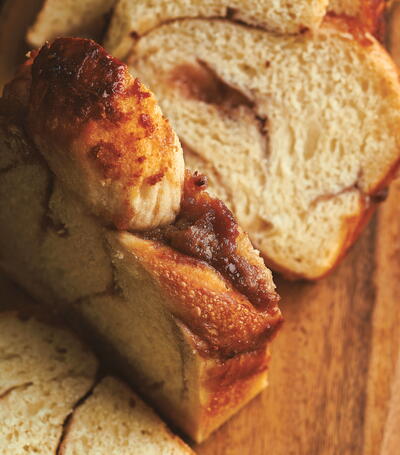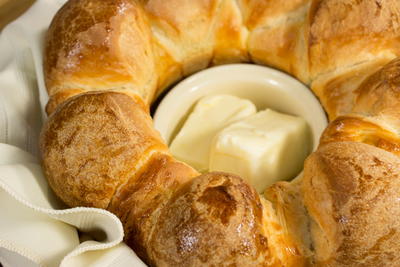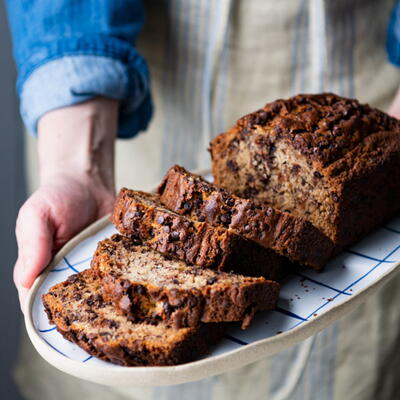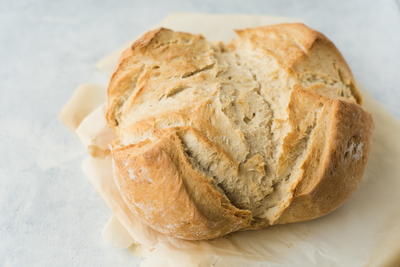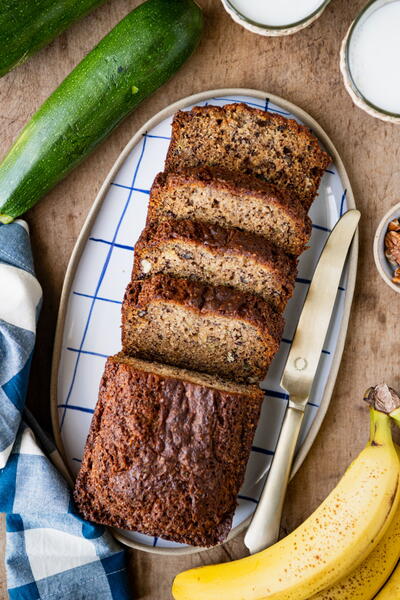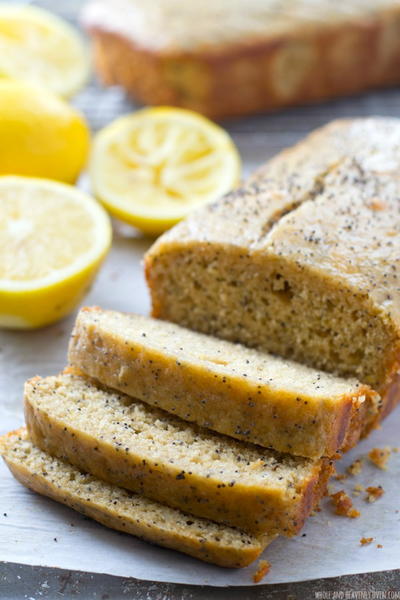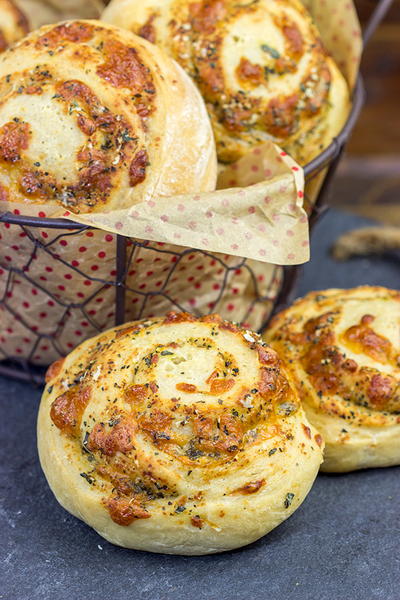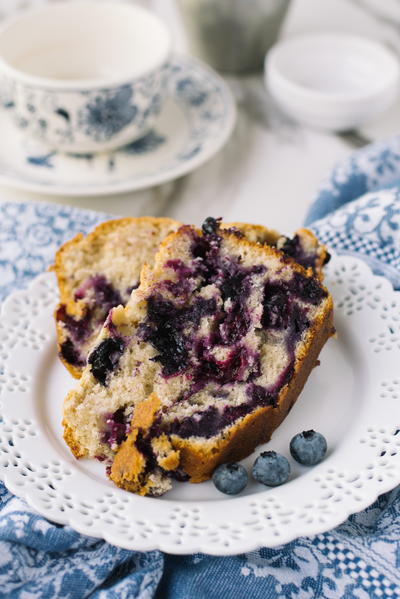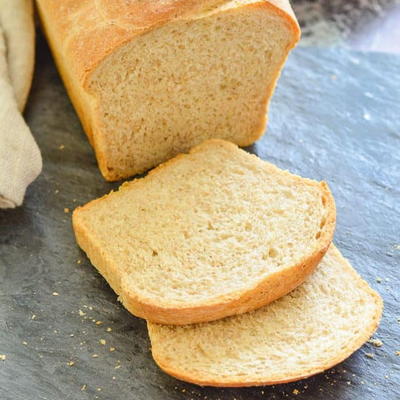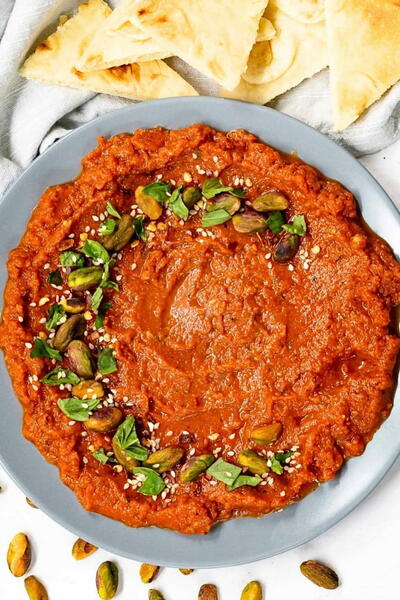Peanut Butter and Jelly Babka
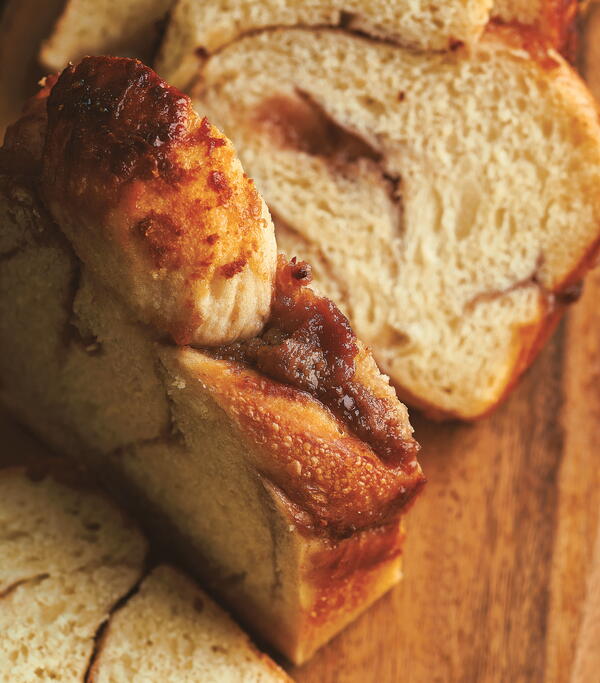
I must confess, this was my first-ever experience of “peanut butter and jelly,” and oh my, I was hooked after my first taste. As I am in the U.K., we don't have jelly available as a standard product so I use a firm, seedless strawberry jam; you can use the jam of your choice or jelly. You can also use smooth or crunchy peanut butter. If you like peanut butter and jelly, you will love this filled babka!
Equipment: A 2-pound (900-g) loaf pan (9x5 inches [23 x 14 cm]), lined with parchment paper or sprayed lightly with a neutral or flavorless oil.
Makes1 standard loaf
Ingredients
- 50 grams (1/4 cup) active starter
- 350 grams (1 1/2 cups) reduced-fat milk, cold or at room temperature (any type of dairy or plant-based milk works; I also like using oat milk in this dough)
- 500 grams (4 cups) strong white bread flour
- 7 grams (1 tsp) salt, or to taste
Filling- 50 grams (1/4 cup) peanut butter (smooth or crunchy)
- 100 grams (1/3 cup) jelly/jam of your choice
DIRECTIONS
-
In the early evening, in a medium-sized or large mixing bowl, roughly mix together all the ingredients, except the peanut butter and jam/jelly until you have a rough dough. Cover the bowl with a clean shower cap or your choice of cover and leave the bowl on the counter for 2 hours.
-
After the 2-hour rest, perform the first set of pulls and folds. The dough will be stiff initially but will soon become smooth and come into a ball; at that point, stop. Cover the bowl again and leave it on your counter.
-
After an hour, perform one more set of pulls and folds on the dough covering the dough again afterward. It will be stiff, slightly stretchier and smooth, and will quickly come into a firm ball.
-
Leave the covered bowl on the counter overnight, typically 8 to 10 hours, at 64 to 68°F (18 to 20°C).
-
The next morning, the dough will be doubled in size, with a smooth surface, typical of milk-based doughs. Place the dough, untouched but still covered, in the fridge for at least an hour until you are ready to use it. This dough can now be baked after an hour, or at any time during the day or evening—or the following morning. In the fridge, the dough will firm up, making it easier to work with later.
-
After the time in the fridge, when you are ready, sprinkle flour over your kitchen counter and lay the pan liner open alongside the dough. Using a bowl scraper or your hands, gently ease the risen dough from the bowl onto the counter. Use your fingertips to start stretching and pushing out the dough until it becomes an 8 x 153/4–inch (20 x 40–cm) rectangle with an even thickness all over. This dough will be firm and easy to work with due to the milk in it. Stretch it out gently, being careful not to make holes in the dough.
Spread the peanut butter all over the dough, then spread a layer of jelly over the top. Roll up the dough from one of the shorter edges toward the other to make an even roll of dough. Once rolled, use a dough knife or sharp knife to cut the sausage lengthwise down the middle into two equal pieces. Twist the two pieces together, then lift the whole dough onto your paper liner and use the paper to lift it into your pan. Allow the dough to proof again, letting it grow level with the edge of the pan. This may take 2 to 4 hours, depending on the temperature of your kitchen.
This step can also be done in the fridge for a longer, slower second proof—up to 24 hours—and can then be baked directly from the fridge.
Once the dough has grown up to level with the edge of the pan, bake it.
-
When you are ready to bake, decide whether you would like to bake in a preheated oven or from a cold start. If preheating, set the oven to 350°F (180°C) convection or 400°F (200°C) conventional.
-
If you preheated the oven, bake it uncovered for 40 to 45 minutes. If you are using a cold start, place the uncovered pan of dough in the oven, set the temperature as above and set a timer for 45 to 50 minutes.
-
Remove the loaf from the oven and the pan, remove the paper, tap the base of the loaf and if it sounds hollow, the loaf is baked. If not, return it to the oven, out of the pan, directly onto the oven rack to bake it for a further 5 to 10 minutes. Remove the loaf from the oven and allow it to cool briefly before slicing and tucking in!
Top Tip
If the jam/jelly starts to brown too much while the babka is baking, cover the tin with another tin the same size, or with foil, to prevent it from burning.
Read NextParmesan Cheese Rolls

